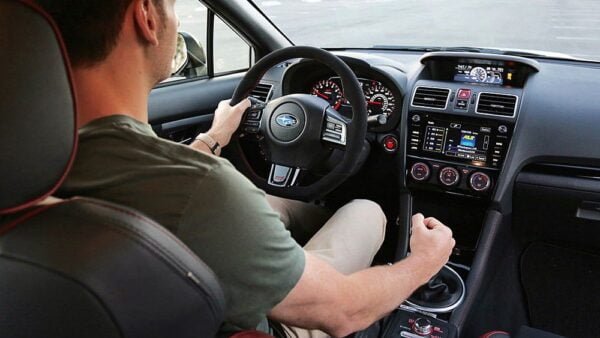Understanding the Basics of Braking Systems
Brakes are the cornerstone of any vehicle’s safety system, playing a crucial role in preventing accidents and ensuring the safety of both the driver and passengers. They are designed to bring a vehicle to a halt or reduce its speed by converting kinetic energy into heat energy through friction. The effectiveness of a braking system directly impacts a vehicle’s safety, making it essential to understand how different braking systems operate.
There are mainly two types of braking systems: disc brakes and drum brakes. Disc brakes use a caliper to squeeze pairs of pads against a disc or “rotor” to create friction. They are known for their superior stopping power and are commonly found in modern vehicles. Drum brakes, on the other hand, consist of brake shoes that press against the inner surface of a rotating drum. While they are less efficient than disc brakes, they are still used in some vehicles, particularly on the rear wheels.

The importance of using brakes correctly cannot be overstated. Misuse can lead to brake fade, where brakes lose their effectiveness due to overheating. This is particularly dangerous in emergency situations requiring sudden stopping. Moreover, poorly maintained brakes can fail unexpectedly, putting everyone on the road at risk.
Common misconceptions about braking often revolve around the idea that all braking systems operate similarly across different types of vehicles. In reality, manual and automatic transmission vehicles require tailored braking approaches. Manual vehicles offer more control over engine braking, where the driver can downshift to slow down the vehicle, reducing the reliance on the brake pedal. In contrast, automatic vehicles rely more on the braking system itself, making it crucial for automatic drivers to be adept at gauging their braking distance and force.
Understanding these fundamentals sets the stage for mastering brake techniques tailored to each type of transmission. By appreciating the nuances of how braking systems work and their proper usage, drivers can significantly enhance their driving safety and control, whether they are behind the wheel of a manual or an automatic vehicle.
Controlled Deceleration: Techniques for Smooth Braking
Controlled deceleration is an essential skill for drivers, ensuring safety and enhancing the driving experience. Despite the differences between manual and automatic transmission vehicles, mastering smooth braking techniques is vital for both vehicle types. For automatic transmission vehicles, the key lies in applying a consistent and appropriate amount of force. Drivers should gradually press the brake pedal to ensure a smooth deceleration, avoiding sudden stops that can be jarring and potentially dangerous.
In contrast, manual transmission vehicles require a more intricate approach due to the involvement of downshifting. Smooth braking in a manual car entails coordinating the timing of braking with the downshifting process. When decelerating, begin by applying gentle pressure to the brake pedal while simultaneously downshifting through the gears. This technique not only helps in achieving a smoother stop but also prevents excessive wear on the brake components. By downshifting, the engine can aid in reducing speed, distributing the braking effort more effectively.
Effective controlled deceleration also involves anticipation and preparedness. Always scan the road ahead to anticipate potential stops or reductions in speed. This foresight allows ample time to begin the braking process gradually, which is crucial for maintaining vehicle control. Whether driving a manual or automatic transmission vehicle, avoiding abrupt braking is a common best practice. Abrupt braking can lead to skidding or loss of traction, particularly in adverse weather conditions.
Additional tips for smooth braking include maintaining proper following distances and keeping your vehicle’s brakes well-maintained. Regular brake inspections and service are paramount to ensuring optimal performance. Moreover, developing a habit of gentle braking not only enhances passenger comfort but also extends the longevity of the vehicle’s braking system. By incorporating these techniques and practices, drivers can achieve controlled deceleration, ensuring smoother and safer journeys across varying driving conditions.
Emergency Braking: Utilizing Anti-lock Braking Systems (ABS)
Emergency braking scenarios can arise without warning, making it essential for drivers to understand and efficiently utilize Anti-lock Braking Systems (ABS). ABS is a sophisticated technology designed to prevent wheel lock-ups during sudden deceleration, thereby maintaining steering control and stability.
When the brakes are applied forcefully in a vehicle equipped with ABS, sensors rapidly detect the speed of each wheel. If a wheel begins to decelerate faster than others, indicating the onset of a lock-up, the ABS module intervenes. It momentarily reduces brake pressure to that wheel, allowing it to regain traction. This cyclical process of pressure modulation happens multiple times per second, ensuring optimal braking force while preserving vehicle control.
For drivers to react effectively in emergencies, it is crucial to apply firm and consistent pressure on the brake pedal when encountering a sudden stop situation. Contrary to common misconceptions, there is no need to pump the brakes in ABS-equipped vehicles; the system automatically handles this for you.
Manual transmission drivers face an additional layer of complexity. To maximize braking efficiency while maintaining engine control, they should avoid pressing the clutch and brake pedals simultaneously until the very last moment. Engaging the clutch too early can lead to a reduction in engine braking, inadvertently increasing the stopping distance. Instead, they should focus on braking first and reserve clutch engagement for just before the engine stalls, ensuring the vehicle comes to a halt effectively.
Practically speaking, familiarity with the feel and operation of ABS is critical. Many drivers experience a pulsating brake pedal during ABS activation—this is entirely normal. Maintaining steady pressure despite the vibration is vital to allow the system to function correctly.
In conclusion, understanding and utilizing ABS technology effectively can be the difference between a controlled stop and a potential accident. Both automatic and manual transmission drivers should make ABS training a priority to ensure they can react swiftly and effectively in emergency braking situations.
Braking at Red Lights: Best Practices for Manual and Automatic Transmissions
When approaching a red light, the decisions made by drivers of manual and automatic transmission vehicles can considerably impact fuel efficiency, mechanical longevity, and overall safety. Understanding these nuances can provide a smoother and more efficient driving experience.
Manual Transmission
For drivers of manual transmission vehicles, a common practice is to shift into neutral and engage the handbrake while waiting at a red light. This approach minimizes clutch wear, since the driver doesn’t keep the clutch pedal depressed for extended periods. Additionally, using the handbrake reduces the risk of the vehicle rolling, particularly on inclines. This technique also ensures the engine is decoupled from the transmission, allowing for a slight improvement in fuel efficiency as the engine is idling without load.
However, this method requires practice and attentiveness. Drivers must ensure they shift back into gear swiftly and efficiently when the light turns green to prevent stalling or delayed starts. Furthermore, continuously shifting in and out of neutral at stops may increase wear on the transmission linkage over time, though it generally still results in less wear than keeping the vehicle in gear with the clutch engaged.
Automatic Transmission
For automatic transmission vehicles, the decision is less complex but equally impactful. Keeping the vehicle in ‘D’ (Drive) is a common practice, as it avoids the need for frequent and potentially disruptive shifts between ‘D’ and ‘N’ (Neutral) or ‘P’ (Park). When the brake is applied while the vehicle is in ‘D’, the torque converter handles the decoupling, thus preventing the engine from stalling. This practice is convenient and reduces wear associated with frequent gear shifts.
Shifting to ‘N’ at lights might improve fuel efficiency slightly by reducing the load on the engine. However, any minor gains can be outweighed by the added wear on the transmission and the risk of shifting errors. Using ‘P’ should generally be avoided at lights because frequent engagement and disengagement can strain the parking mechanism, not to mention the risk of being rear-ended while in ‘P’. This can cause immediate and costly damages.
In conclusion, the best practice for manual transmission drivers at red lights is to shift into neutral and use the handbrake. Drivers of automatic transmissions should generally keep their vehicles in ‘D’ with the brake applied to balance convenience and mechanical longevity.

